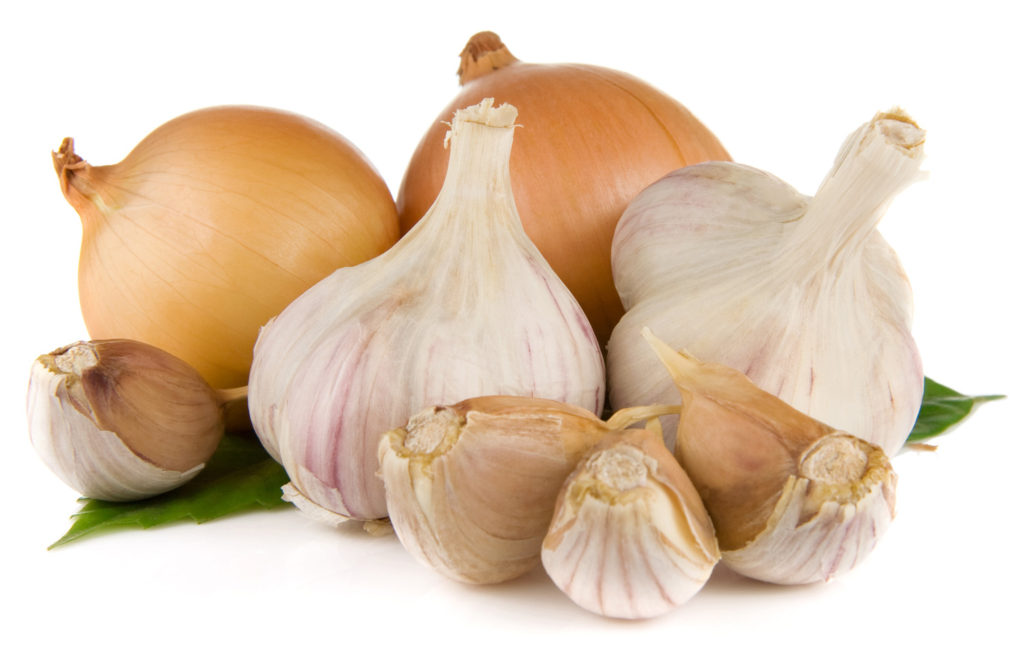9 All Natural Antibiotics
Antibiotics or antibacterials are a type of antimicrobial used in the treatment and prevention of bacterial infection. They may either kill or inhibit the growth of bacteria. Several antibiotics are also effective against fungi and protozoans, and some are toxic to humans and animals, even when given in therapeutic dosages. Antibiotics are not effective against viruses such as the common cold or influenza and may be harmful when taken inappropriately. Now the pharmaceutical companies would like us to believe that the only effective antibiotics are man-made drugs, however, people have known about all-natural alternatives that have proven to be just as effective for centuries.
Let’s take a look at nine of the most popular and proven all-natural sources of antibiotics.
1) Garlic

Just eating a few cloves of garlic a day will help the body fight off all kinds of bacterial infection. Studies have also shown that garlic will help to lower blood pressure and lower the risk of diabetes. Garlic can help with toothaches too! However, just eating garlic in foods won’t cut it, it has to be raw. Tic-tac anyone?
2) Echinacea
Echinacea is a herb widely used to fight infections and has been the subject of wide scientific research. Even “WebMD” is positive about it concluding that: “Echinacea is widely used to fight infections, especially the common cold and other upper respiratory infections. Echinacea is also used against many other infections including the flu, urinary tract infections, vaginal yeast infections, genital herpes, bloodstream infections (septicemia), gum disease, tonsillitis, streptococcus infections, syphilis, typhoid, malaria, and diphtheria.”
3) Apple-Cider Vinegar
Apple-Cider Vinegar contains malic acid which is known to have antibiotic properties. It has also been shown to help with diabetes and control blood sugar levels, this happens because apple cider vinegar helps to block the digestion of starches.
4) Ginger
For centuries, people have been using ginger in the treatment of flu and colds. It is also helpful for alleviating muscle and joint discomfort. Ginger also seems to help with painful periods. In one study, more than 60% of women felt that ginger lessened pain.
5) Colloidal Silver
Colloidal silver has been known as an effective antibiotic for centuries. In the early 1900s, Alfred Searle, founder of the Searle pharmaceutical company, discovered that it could kill the most deadly pathogens.
Recent research has also stated that colloidal silver can destroy antibiotic resistant microbes like MRSA, the bird flu, and SARS.
6) Manuka Honey
Honey has been used since ancient times to treat multiple conditions. It wasn’t until the late 19th century that researchers discovered that honey has natural antibacterial qualities.
Applied topically, it can kill a wide range of pathogens including MRSA and flesh-eating bacteria.
7) Oil of Oregano
Oil of Oregano is especially effective at addressing infections within the GI tract and is regarded as a particularly powerful broad-spectrum natural antibiotic.
8) Olive Leaf Extract
According to Dr. Ronald Hoffman MD, olive leaf extract as a healing modality was first realized in the 1800’s for malaria. Olive leaf extract may be best known for its ability to reduce fever even due to severe illness.
“Early in the last century, oleuropein was isolated from olive leaf extract as this phytochemical was thought to give the olive tree its resistance to disease. Researchers from the Netherlands then learned that oleanolic acid, a component of oleuropein, acted as a broad spectrum natural antibiotic, which safely and strongly inhibits the growth of not only bacteria but also viruses and fungi.”
9) Turmeric
Turmeric is a spice widely used in traditional Indian cooking that has been used holistically for centuries.
Dr. Kelly Brogan MD uses turmeric widely in her holistic psychiatry practice. She states, “This wonder-spice is a mainstay of my anti-inflammatory work with patients in my practice where I use liposomal preparations of curcumin, the natural phenols responsible for turmeric’s yellow color when I suspect their symptoms stem from a challenged immune system.”
There are many different types of infections, bacterial, fungal, parasitical, etc. If you suspect that you have an infection you should see a doctor find out the source and seriousness.
However, if you have experienced these symptoms before and you don’t feel your situation is life threatening, give some of these natural remedies a try, either alone, or a combination of them. Stay healthy!







